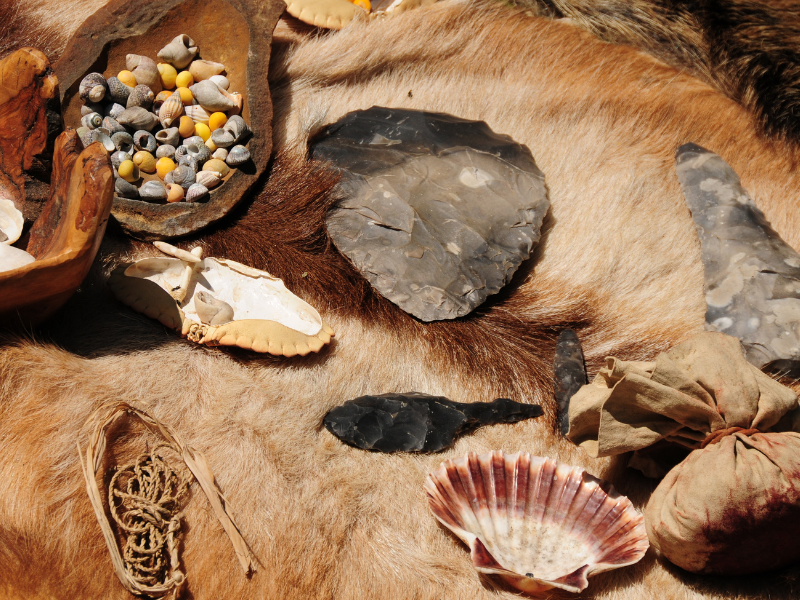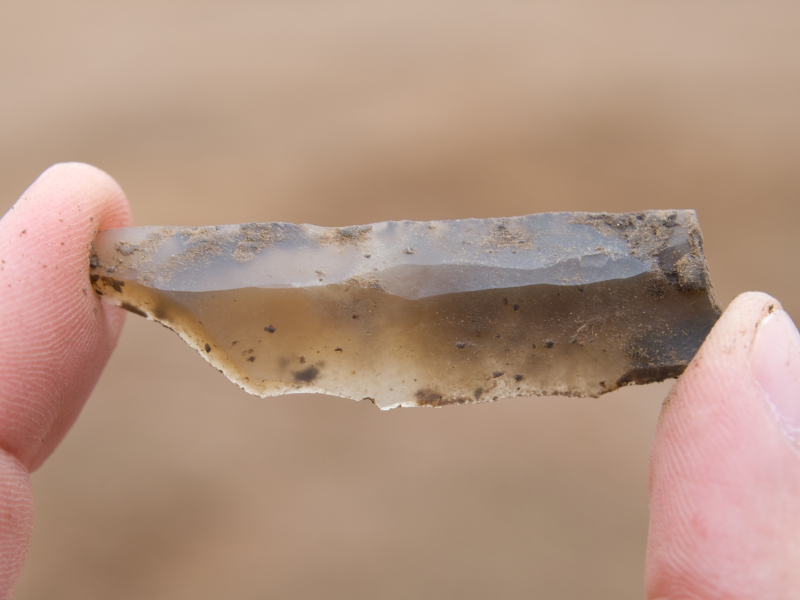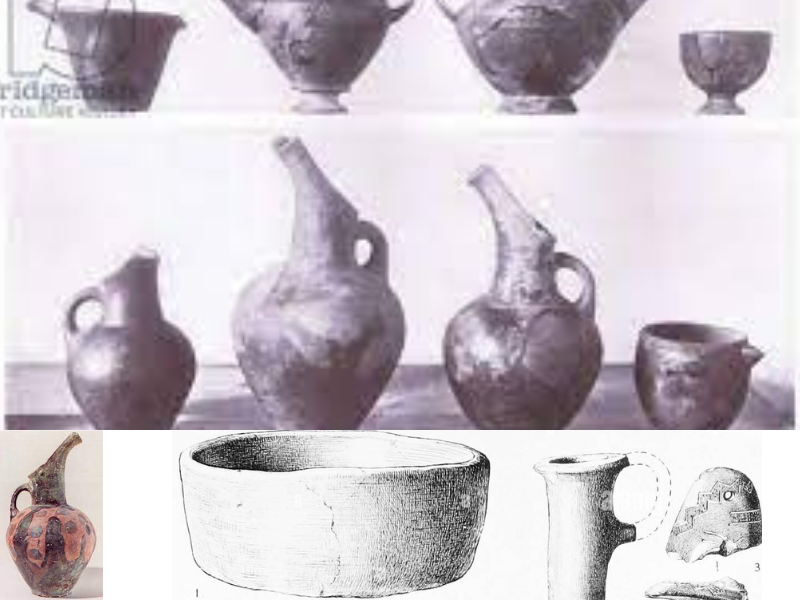Table of Contents
Introduction: Journey into Neolithic Crete
Neolithic Crete, a cradle of ancient civilization, offers a fascinating glimpse into the dawn of human societal development. This era, pivotal in the island’s history, witnessed profound transformations that shaped the cultural and historical landscape of the Mediterranean. This article embarks on an exploratory journey through Neolithic Crete, uncovering the layers of this foundational period.
The Foundations of Neolithic Society
The Neolithic period in Crete marked the beginning of settled life. Small communities formed, laying the groundwork for future societal structures. These early societies were predominantly egalitarian, organized around kinship and family clans.
Life was centered on mixed farming, incorporating hunting, fishing, and foraging for vegetables and shellfish.
The oldest villages were small, with inhabitants owning only as much land as they could work, sufficient for survival. In these communities, the exchange of goods, if practiced, was not aimed at profit but rather at sustaining the community. Social hierarchy was based on personal qualities like skills, strength, sex, and age, with seniority often prevailing. Read more about the Foundations of the Neolithic Society.
Arrival of the Anatolian Settlers
Around 7000 BC, Crete experienced a significant cultural influx with the arrival of Anatolian settlers. These immigrants brought with them domesticated animals and a variety of soft wheat, unique to their native land.
Their integration into Cretan society introduced new agricultural practices and crops, fundamentally altering the island’s agricultural landscape. This period saw the blending of Anatolian traditions with those of the indigenous Cretans, leading to a rich cultural synthesis.



Kephala: A Microcosm of Neolithic Life
The village of Kephala at Knossos stands as a testament to the Neolithic way of life in Crete. Inhabitants built their homes from mud and reeds, indicative of the era’s architectural style. The villagers, numbering 25–30 per generation, were divided into families.
Their lifestyle revolved around raising animals, harvesting crops, and creating tools from stone, obsidian, and bone. Notably, they also crafted anthropomorphic and zoomorphic figurines from clay, reflecting their artistic and possibly religious inclinations.
During the Early Neolithic period, Kephala’s population grew to between 200–600 people per generation. The architectural style evolved, with houses featuring mud-brick walls, stone foundations, and flat roofs. The emergence of more structured living spaces, including the subdivision of houses into multiple compartments, showcased the community’s increasing sophistication.
By the Middle Neolithic, the settlement expanded further, accommodating 500–1000 people per generation. Improvements in construction techniques were evident, with the introduction of windows, wooden doors, and raised hearths.
Late Neolithic Transformation: A Cultural and Economic Shift
The Late Neolithic period brought another wave of migration from Anatolia, introducing new cultural and technological elements. These newcomers significantly influenced Cretan society, introducing pottery and terracotta, signaling advances in manufacturing and artistic expression.
They engaged in long-distance exchange and were perhaps familiar with the concept of private ownership of production means. This period saw the formation of sizeable village communities, marking a shift towards a more complex social and economic structure.
The “metal revolution” during this era was a gradual transformation. It began with the extraction of metal ores and the smelting of metals like arsenical copper and bronze.
This period saw the rise of full-time artisans and merchants, indicating a departure from purely kinship-based societal structures. The emergence of metallurgy significantly impacted the community, leading to the creation of more efficient tools, weapons, and ornaments. This shift also had social implications, as those proficient in metalwork gained prominence within the community.
Maritime ventures and the establishment of trade networks were other significant aspects of this period. The high demand for metals led Cretans to undertake risky sea voyages, driven by the potential for high profits.
These expeditions not only brought material wealth but also enhanced the social and political status of those involved. The era witnessed individuals asserting themselves within their communities through resourcefulness and mastery of new techniques like metallurgy.
Despite their agricultural success, the Cretans lacked significant metal resources, leading to a unique economic situation. They traded surplus agricultural products, fabrics, and ceramics for metals, turning the Aegean Sea into a hub of maritime trade and cultural exchange.

Agricultural Surplus and Societal Dynamics
The advancements in agriculture during the Late Neolithic period in Crete led to a significant increase in food production. This surplus not only ensured a stable food supply but also catalyzed profound societal changes. With a surplus, communities could support larger populations and engage in activities beyond mere subsistence. This agricultural success paved the way for specialization in crafts and trade, contributing to the development of a more complex and stratified society. The shift from subsistence farming to surplus production marked a pivotal point in Cretan history, setting the stage for the emergence of more advanced social and economic structures.
Technological Advancements and Cultural Flourishing
Technological progress in the Late Neolithic era was not limited to agriculture and metallurgy. Architectural techniques advanced significantly, with settlements like Kephala and Phaistos showing improvements in house construction.
The use of timber and mud bricks became more prevalent, and the incorporation of hearths and floors made of beaten earth reflected a growing sophistication in building methods. These architectural advancements facilitated the development of larger and more complex settlements, indicative of an evolving societal structure.
Artistically, this period saw a blossoming of culture, particularly in the realm of religious and artistic expression. The creation of terracotta and stone figurines, some emulating Cycladic forms, suggests a deepening of religious practices and artistic skills. These figurines, possibly used for cultic purposes, provide insight into the spiritual life of the Late Neolithic Cretans and their cultural connections with the wider Aegean region.
Population Growth and Urban Precursors
The Late Neolithic era in Crete was characterized by significant population growth and the expansion of settlements. Kephala, for example, experienced considerable growth, both in population and area. This expansion was not just a reflection of increased birth rates but also a sign of the village’s growing importance as a cultural and economic center. As these settlements expanded, they began to exhibit features of proto-urban centers, laying the groundwork for the urbanized societies that would emerge in the Bronze Age.
The Emergence of Trade Networks and Maritime Ventures
Trade played an increasingly important role in Late Neolithic Crete. The island’s strategic location in the Aegean Sea made it a natural hub for maritime trade. Cretan traders, motivated by the scarcity of certain resources and the allure of wealth, embarked on sea voyages to trade with other Aegean communities. This maritime trade was instrumental in the cultural and economic integration of the region, fostering a shared Aegean identity and facilitating the exchange of goods, ideas, and technologies.
Conclusion: Prelude to the Bronze Age
The Late Neolithic period in Crete was a time of dynamic change and development. The advancements in agriculture, technology, and trade during this era laid the foundation for the subsequent Bronze Age and the rise of the Minoan civilization.
The societal transformations, architectural innovations, and the flourishing of trade and culture during the Late Neolithic period were pivotal in shaping Crete’s trajectory. This era set the stage for the emergence of one of the ancient world’s most advanced cultures, leaving an indelible mark on the history of the Mediterranean and human civilization.


